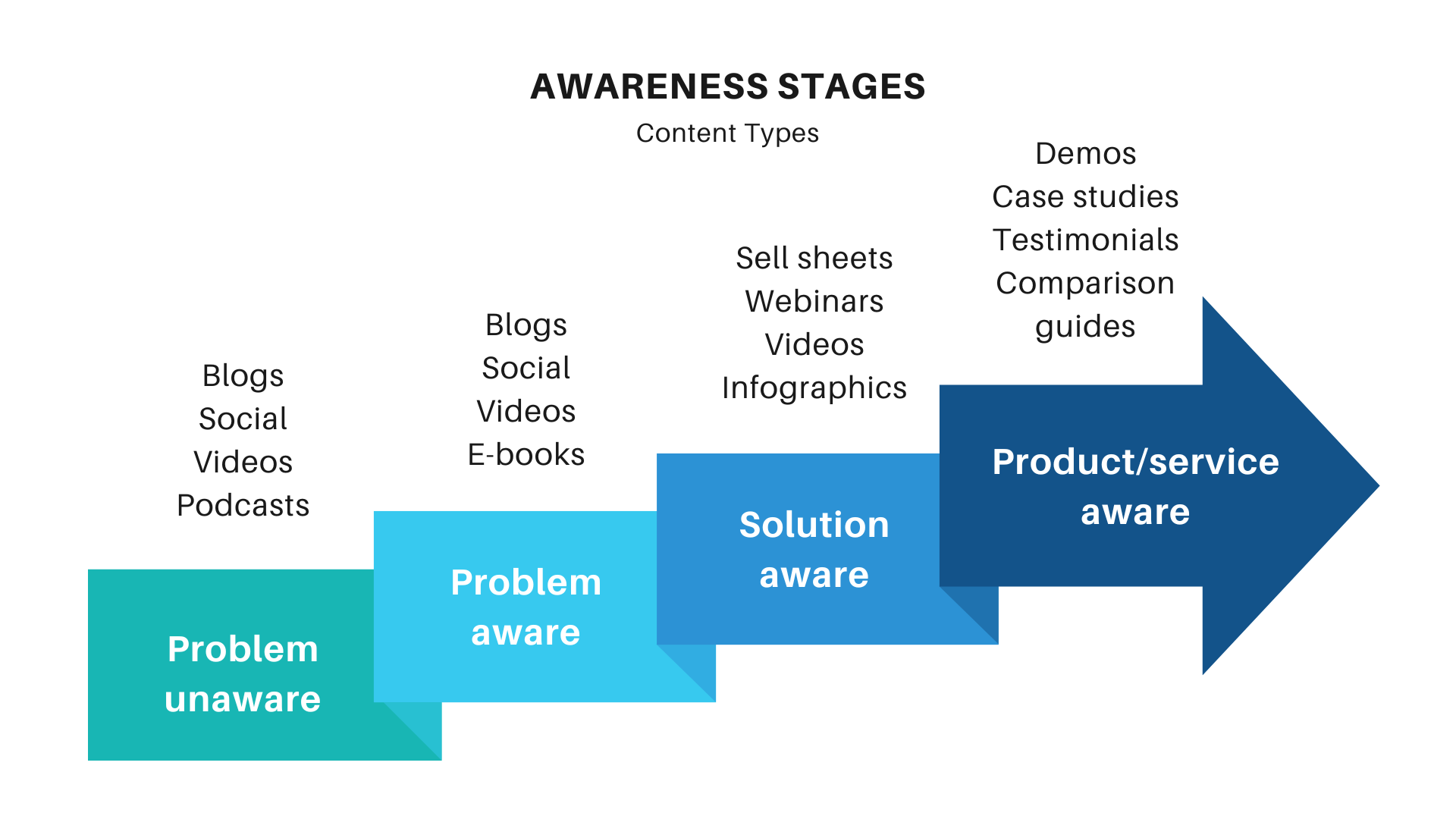When your content isn’t connecting with your target audience, it’s tempting to go back to the drawing board.
But what if your content just needs a perspective shift?
Content often misses the mark with potential buyers because it doesn’t account for their level of awareness.
This means your emails, blogs, case studies and more could be talking about a problem that your audience doesn’t even know it has yet.
Bridge the divide between your content and audience.
The right message for your buyers meets them where they’re at.
To do this, you first need to know how aware your audience is of the problem you’re trying to help them solve.
Then, you can build content that moves them to the next level of awareness, and, ultimately, closer toward a decision in your favor.
Learn the 4 stages of audience awareness—and the content you need to address each one.
1) Problem unaware
At this stage, your audience can only see the way they’re doing things—not the problem it creates. Even if they notice issues, an unaware audience doesn’t view them as something that needs to be solved.
Which means content focused on problem-solving products or services won’t even cause a blip on their radar.
Instead, focus on presenting the problem with content that shows the difference between their current setup and the ideal state. Show them they’re capable of more than what they’re doing now, from generating more opportunities to achieving scalable growth for their business.
Blogs, videos, podcasts and social media posts are all natural avenues to educate an unaware audience.
2) Problem aware
Your audience knows they have a need or problem at a high level, but they don’t know how to address it—yet.
With this audience, your content’s job is to further educate them on the problem and introduce the solutions.
It’s less about your specific offering and more about giving your audience the information they need, highlighting the obstacles they’ll face and how they can overcome them to reach their goals.
Again, keep the focus on blogs, social media or other interactive and informative content and channels.
3) Solution aware
This audience knows they have a problem and they’re actively seeking a solution. But they’re not sure what the right solution is.
They’re likely considering whether they can solve the problem internally or if they need to outsource a partner.
So you’ll want your messaging to demonstrate how your product or service solves their challenges and discuss its specific benefits.
And you’ll want to show your solution in action, making videos, infographics and sell sheets that demonstrate your capabilities and approach key pieces of content.
4) Product or service aware
They know the problem—and they’re aware of your solution. At this stage, your audience is trying to determine if it’s right for them.
That means they’re looking at differentiators across various offerings. So this is where you show them why your product or service stands out from the competition—and it’s where demos, case studies and testimonials become extremely useful.

The more targeted your content, the better you’ll connect with buyers.
When your content focuses on your audience’s current needs instead of pushing them to where you want them to be, you’re more likely to engage with them—and bring them closer to a purchase.
